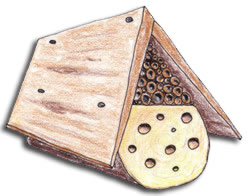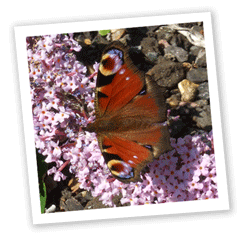|
|
communities
Find out more
Nature is a catalyst for community action - anyone can join in and make a difference to their surroundings.
External links
Footprint Trust
BTCV
Brading Community Partnership
Godshill
Scouts
Natural Enterprise
Big Wildlife Garden
Nature is all around us; in our gardens, village greens, open spaces and the wider countryside. It may seem unchanging and unchangeable, but the majority of the nature that we see, hear, smell and touch has been influenced by our hands and continues to be so.
The fate of the forests, downland, parks and gardens is intimately linked with our own. Nature, like people, loves communities. Each individual plant and animal is linked to the land and other living things, forming larger and larger interdependent units of great diversity. Likewise, people forge relationships between themselves and their surroundings. Nature is a catalyst for communities to come together – a local project can provide an opportunity to bring people together in a common aim, to share in a new experience and make friends. Involvement in a project to improve the wildlife of an area helps the community to develop respect and responsibility for their surroundings, and reduces problems of vandalism.
Get involved and do your bit...
Recording your sightings - we need your records
| Newts in Your Neighbourhood - the Wildlife Trust is currently running a Newt Survey and they want you to tell them about your sightings of newts in your back garden and help them create an Island Newt Map. Download the survey form here. |  |
Glow worms - have you ever seen a glow worm? If the answer is yes, the IW Local Records Centre would love to hear from you. Send your records to lrc@iow.gov.uk with Where you saw glow worms (with a grid reference), When and How Many you saw. Find out more about the survey here. |
 |
| iSpot is a new, online way of recording species, learning about your finds and sharing your knowlege of your local wildlife. People can upload their observations, help each other identify it and discuss what they've seen. Find out more and register at www.ispot.org.uk |  |
Wildlife gardening
When you are tidying the garden for winter, leave a pile of sticks and leaves in a corner to provide a place for insects to hibernate over the winter. You may even find that a hedgehog will take up residence. You could also build a bug box which make very good winter quarters for lacewings and ladybirds. These insects are very helpful to gardeners as they eat pests like aphids. Download bug box instructions here.


Our friends at Gift To Nature have produced a brilliant set of bee-friendly gardening fact sheets which help you select the best plants for attracting bees into your garden.
For more ideas on ways to encourage wildlife to your garden visit the Big Wildlife Garden website - it doesn’t matter if you have a tiny patio, a huge lawn or a school playing field; your garden could become part of England’s biggest new wildlife reserve!

Becoming a warden
A
pond warden course is run each year by the British Trust for Conservation
Volunteers, to assist members of the public who are interested in
managing ponds for wildlife. Some have gone on to help look after a pond
on public land, while others have created a pond in their own garden.
A new Cemetery Warden project has been launched in the West WIght and being run by the Footprint Trust. Those wishing to train and become Cemetery Wardens will have an interest in nature conservation, the landscape, heritage and the community – as this scheme intends to seek to bring together these diverse concerns.
Using community grants
During 2004, over 40 Island groups received a grant via the BTCV
People and Places scheme to improve their local environment. They included Brading
Community Partnership which is working with others to improve butterfly
conservation in an old chalk pit, and Godshill
Scouts, who have improved a piece of wasteland to provide habitat for
barn owls and other wildlife and created a wildlife pond. See our
own grants and funding page for grants you can apply for this year.
Setting up a nature reserve
In 1988, residents formed a group to look at ways of helping protect their
local countryside around Sibden
Hill and Batts Copse on the outskirts of Shanklin. With the increasing
pressure for development around the site, the group lobbied the Isle
of Wight Council to designate the site as a Local Nature Reserve. Through
the hard work and determination of the group, a Local Nature Reserve
at Sibden Hill and Batts Copse was declared by the Isle of Wight Council.
| home | partnership | habitats | species | biodiversity opportunity areas | benefits of biodiversity |
biodiversity & you | advice | walks & events | library | contact |